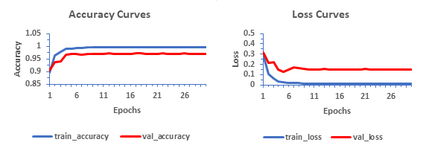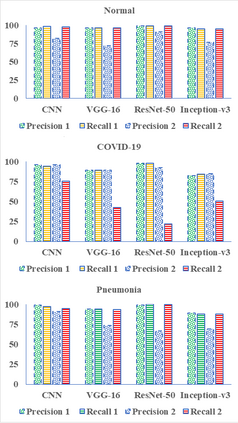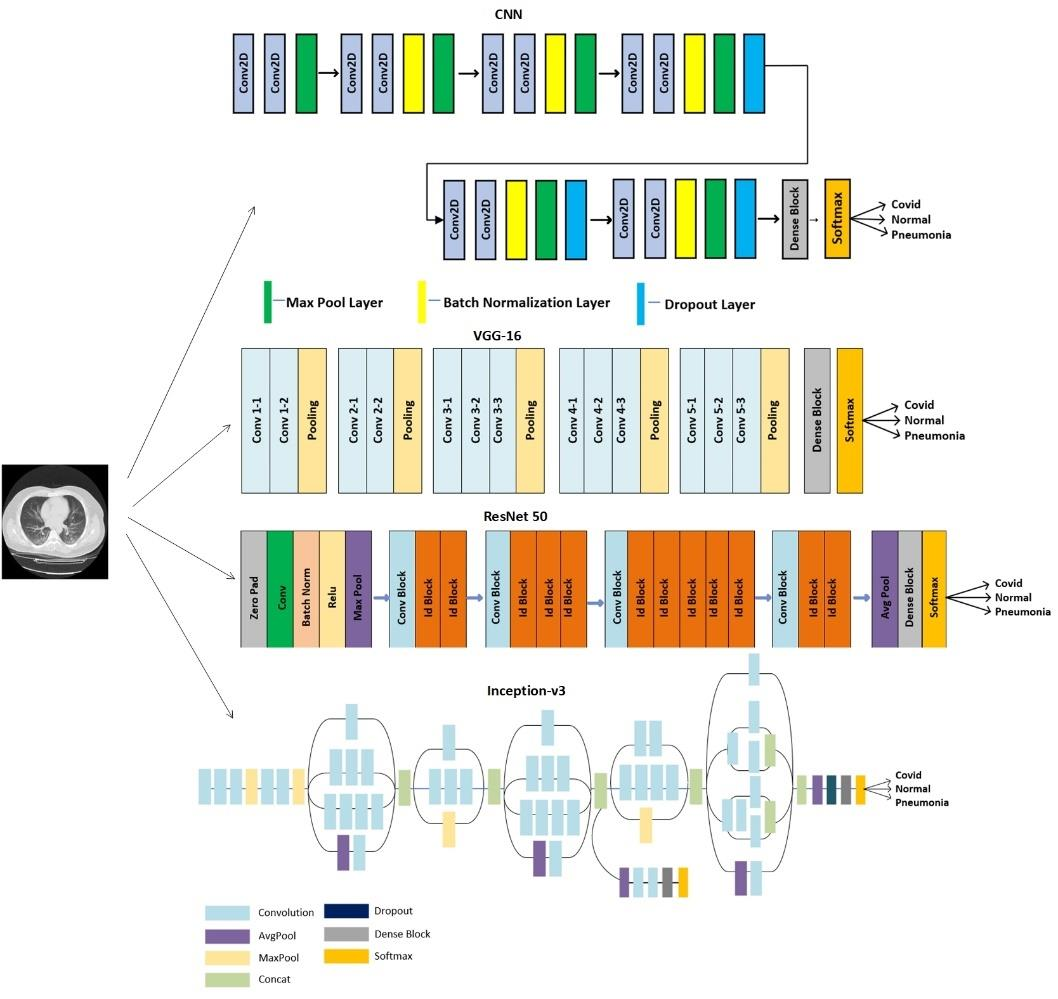Computer tomography (CT) have been routinely used for the diagnosis of lung diseases and recently, during the pandemic, for detecting the infectivity and severity of COVID-19 disease. One of the major concerns in using ma-chine learning (ML) approaches for automatic processing of CT scan images in clinical setting is that these methods are trained on limited and biased sub-sets of publicly available COVID-19 data. This has raised concerns regarding the generalizability of these models on external datasets, not seen by the model during training. To address some of these issues, in this work CT scan images from confirmed COVID-19 data obtained from one of the largest public repositories, COVIDx CT 2A were used for training and internal vali-dation of machine learning models. For the external validation we generated Indian-COVID-19 CT dataset, an open-source repository containing 3D CT volumes and 12096 chest CT images from 288 COVID-19 patients from In-dia. Comparative performance evaluation of four state-of-the-art machine learning models, viz., a lightweight convolutional neural network (CNN), and three other CNN based deep learning (DL) models such as VGG-16, ResNet-50 and Inception-v3 in classifying CT images into three classes, viz., normal, non-covid pneumonia, and COVID-19 is carried out on these two datasets. Our analysis showed that the performance of all the models is comparable on the hold-out COVIDx CT 2A test set with 90% - 99% accuracies (96% for CNN), while on the external Indian-COVID-19 CT dataset a drop in the performance is observed for all the models (8% - 19%). The traditional ma-chine learning model, CNN performed the best on the external dataset (accu-racy 88%) in comparison to the deep learning models, indicating that a light-weight CNN is better generalizable on unseen data. The data and code are made available at https://github.com/aleesuss/c19.
翻译:用于诊断肺病的计算机图象(CT)已被例行用于诊断肺部疾病,最近在大流行病期间,用于检测COVID-19疾病的感染性和严重性。在临床环境中使用machine学习(ML)自动处理CT扫描图像的方法中,一个主要关注的问题是,这些方法在公开提供的COVID-19数据的有限和偏差子集上得到了培训。这引起了人们对这些模型在外部数据集上是否具有普遍性的关切,而这种模型在培训期间没有被模型看到。为了解决其中的一些问题,在这项工作中,从最大公共储存库之一(COVIDx 2A)获得的已确认的COVID-19数据的CT扫描图像。在对机器学习模型中,使用COVIX 2AX 2A 进行内部自动分析。为了外部验证,我们制作了Indian-COVID-19 CT数据库集,一个包含3D COVID 普通模型的12096 胸部图象(在India的288 COVID-19 病人中没有被看到)。 4个S-Art 机器学习模型的比较性业绩评估, VIVDDD19D 数据, 运行中, 运行中的所有数据运行数据运行数据模型显示了。





